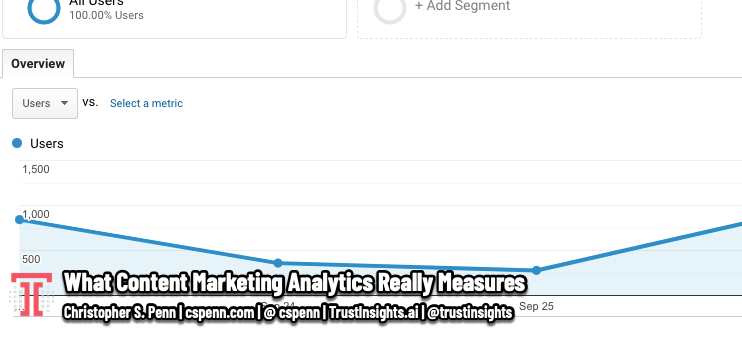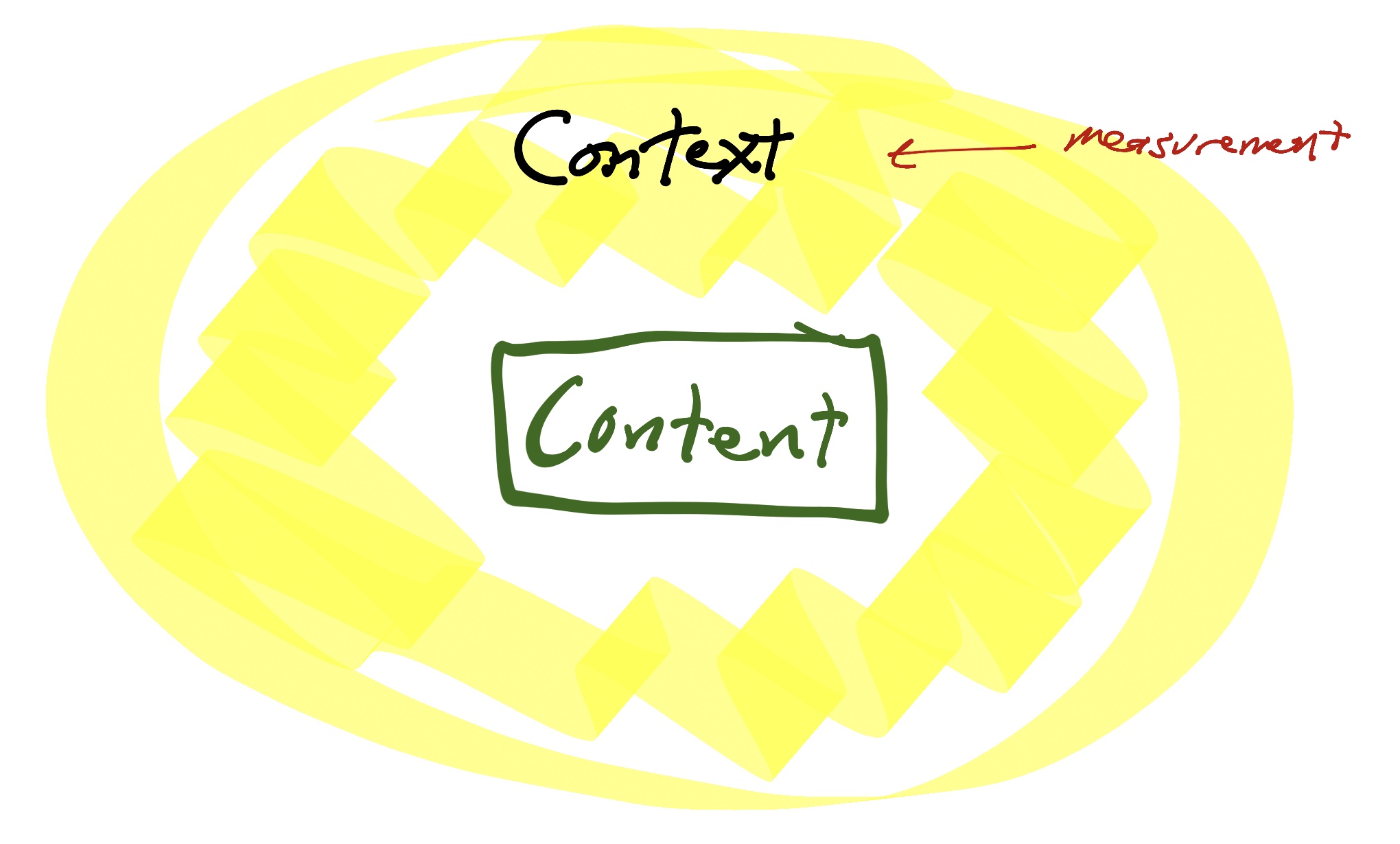
When we talk content marketing analytics, what comes to mind? How well did a piece of content perform? What tools should we use to measure our content? How should we use our analytics to inform our content marketing strategy?
Those are all good questions, good lines of inquiry, and they highlight one of the most important, ignored aspects of content marketing analytics:
We’re not measuring content.
When it comes to content marketing analytics – especially answering the question of how well our content is performing – what we’re really measuring is the context in which our content is served to our audience.

Think about it for a second. If you copied and pasted the same post on Instagram, LinkedIn, Facebook, your blog, your email newsletter, and your Medium account, would you expect the same performance on each channel, in each context? No. That would be ludicrous, the height of unrealistic expectations. You couldn’t even do apples to apples measurements, much less expect similar outcomes. An email open is not the same as an Instagram impression. A blog click on a call to action isn’t the same as a click on a Facebook post.
Yet when we talk about content marketing analytics, we speak as though we’re evaluating the quality of the content itself. But think about how much context matters, and how it obscures the value of the content. If a piece of content – the same piece – does well on Twitter but poorly on Facebook, is the content good or bad? If the same video clip takes off on Tiktok but languishes on Instagram, is the content good or bad?
See how difficult it is to judge the value of any given piece of content absent its context? It’s like asking if a steak is good or bad. The best steak served in a shop that otherwise sells ice cream is not going to sell well. The best pizza served in a restaurant known for its sushi isn’t necessarily going to do well.
When we’re talking about content marketing analytics, we’re really talking about context marketing analytics. Given any piece of content, how well did it perform in different contexts?
So, are we able to draw ANY conclusions about the intrinsic value of a piece of content that’s not context-sensitive? Possibly:
- If the same piece of content does poorly everywhere we try it, without exception, we can logically conclude the content itself probably isn’t very good.
- If the same piece of content does well in at least one place, we can logically conclude that it might have SOME value. We then need to determine how important the context is to that piece of content, and find the right contexts for it.
Is there any way to measure the intrinsic value of a piece of content, absent its context? Yes and no. We could look at the aspects of content that would improve the probability of high performance – tone of voice, grade level, relevant topics, etc. – but those characteristics are still context-dependent. An article written for Medium or Substack may reach a different audience that values different things than an audience reading the same content on your blog.
Why? At the end of the day, content is consumed by people, and people differ in their use of pretty much everything. When we measure content, when we measure marketing, we’re really measuring people and their behaviors. Content never consumed by people has no value, and there’s nothing worth measuring.
Certainly, do analysis of what content is working for your marketing, but remember that most of the time, you’re measuring people’s reactions to your content, not the content itself.
You might also enjoy:
- Mind Readings: Hacking Social Media Algorithms
- Fireside Chat: Geraldine Deruiter on Food, Feminism, and Fury
- Almost Timely News, January 14, 2024: The Future of Generative AI is Open
- Almost Timely News, February 4, 2024: What AI Has Made Scarce
- You Ask, I Answer: Reliability of LLMs vs Other Software?
Want to read more like this from Christopher Penn? Get updates here:
 Take my Generative AI for Marketers course! |


Leave a Reply